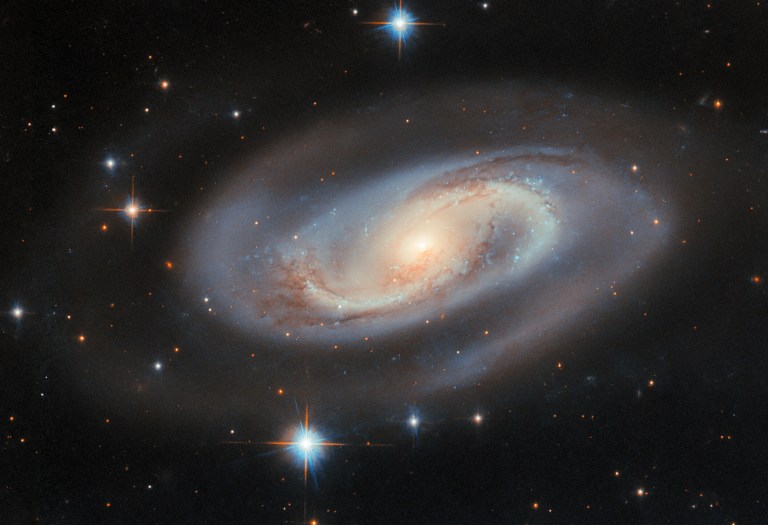Hubble Peers into the Heart of a Galaxy on Fire

NASA/ESA’s Hubble Space Telescope captured light from the spiral galaxy UGC 11397, located in the constellation Lyra (The Lyre). That light took 250 million years to reach us.
At first glance, UGC 11397 looks like a typical spiral galaxy with two elegant arms, glowing with stars and marked by clumps of dark dust.
But at its core lies something far more powerful — a supermassive black hole weighing 174 million times more than our Sun. As it pulls in nearby gas, dust, and stars, the matter heats up and produces a dazzling display of light across the spectrum — from gamma rays to radio waves.
These bursts of light can appear and vanish suddenly. However, in galaxies like UGC 11397, thick dust clouds block much of this activity in visible light. Despite this, the black hole’s intense X-ray radiation cuts through the dust, revealing its presence. This signature led astronomers to label UGC 11397 as a Type 2 Seyfert galaxy — a type where the bright core remains hidden in visible light behind a donut-shaped cloud of dust and gas.
Researchers are using Hubble to study hundreds of galaxies like UGC 11397. Their goal is to measure black hole mass, track their growth, and study star formation in the harsh environments at galactic centers.


Feeling lucky, are ya? I stumbled across 600betlucky and it actually delivered a few decent wins. Could be a fluke, but hey, worth a shout! Give it a go: 600betlucky
Yo, had anyone heard of f1686s? They seem to have a wide range of stuffs. Is f1686s worth the time signing up?
666pgame, tried a few rounds. Decent selection and pretty smooth gameplay. Worth checking out if you’re looking for something new: 666pgame